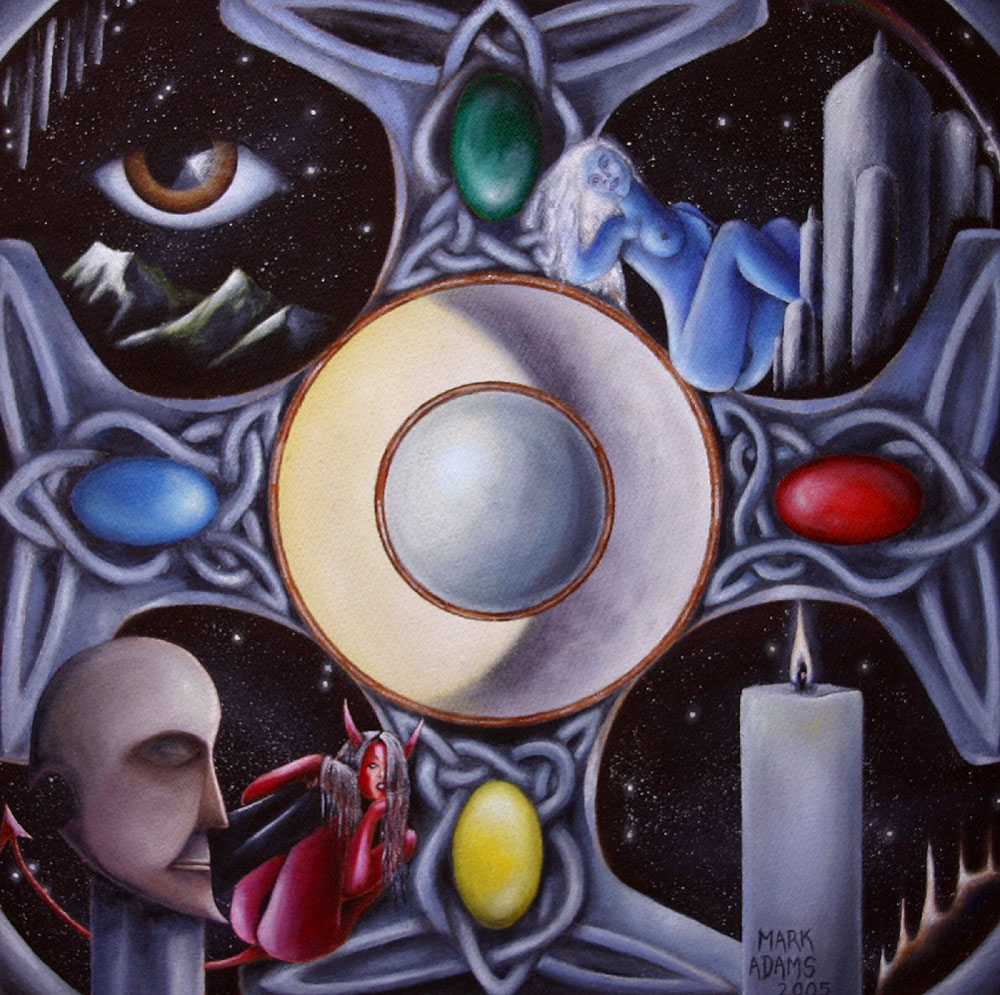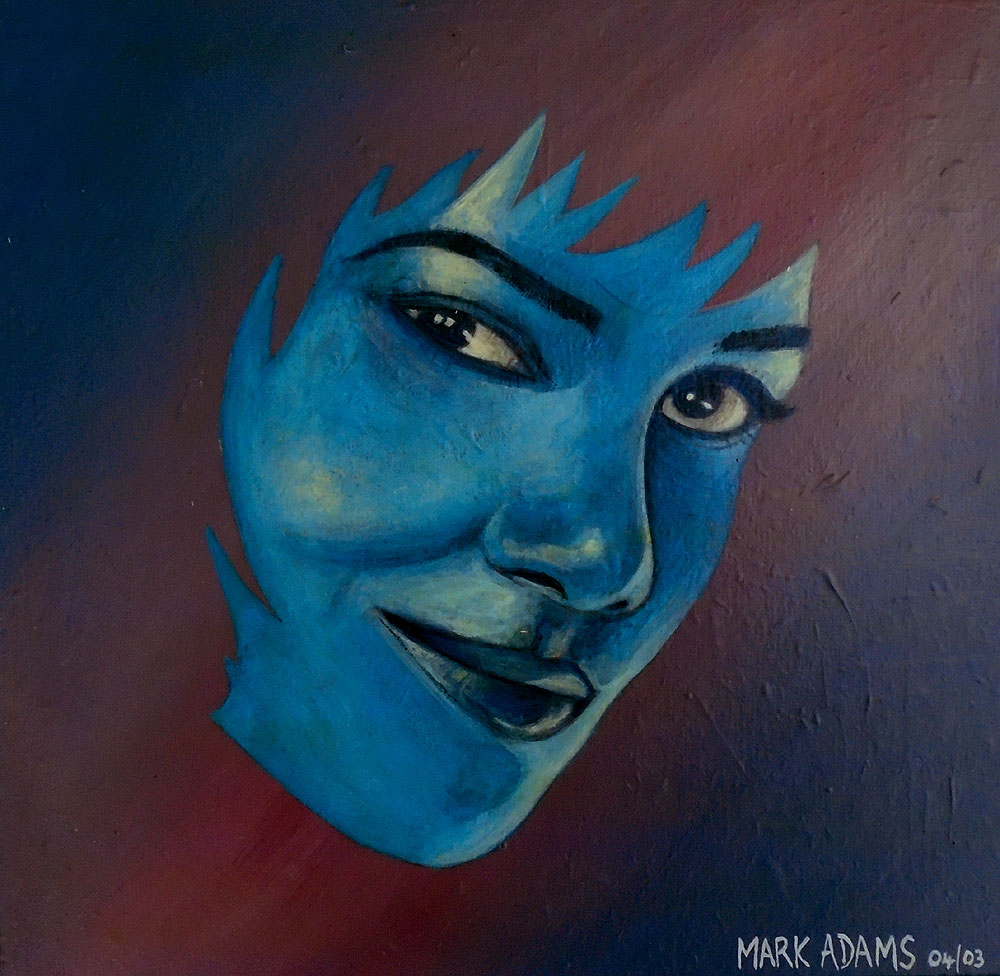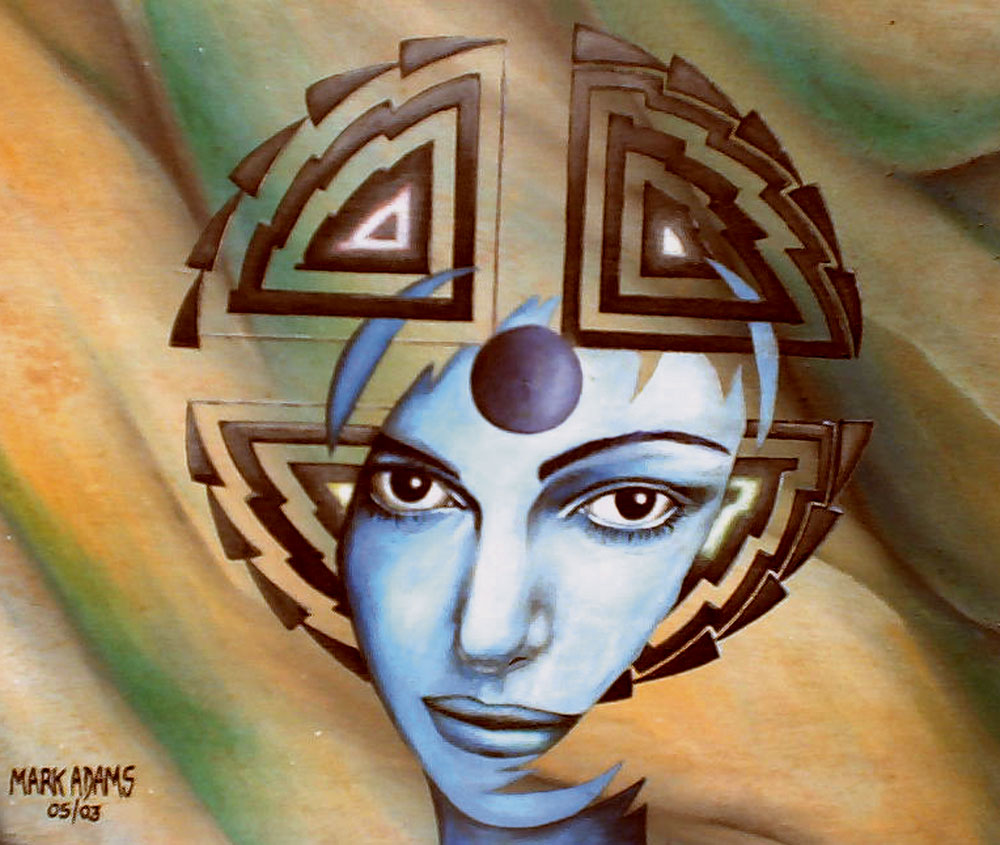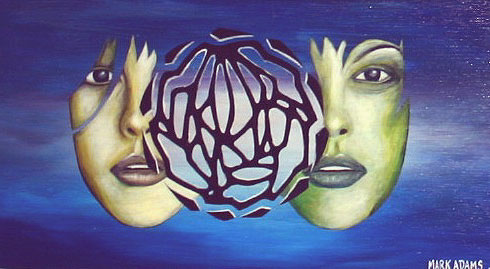INFP Mandala

Inspired by Jung’s personality type theory and the Myers-Briggs personality type indicator.
According to the test, will reveal an individual’s dominant psychological functions, thus determining choices, preferences, opinions and decisions the individual will make in the world according to his/her own personality attributes.
The personality attributes, according to this theory consist of eight psychological functions, which include introvert/extrovert, intuitive/sensing, feeling/thinking and perceptive/judgement, with each function ‘twins’ being opposites, or ‘two sides of the same coin’.
My own personality type, according to the criteria of this test, is INFP (Introvert/Intuitive/Feeling/Perceptive), which has been the concept of the INFP Mandala painting, but also hinting at it’s opposite ‘shadow’, ESTJ (Extrovert/Sensing/Thinking/Judgement), which would exist as an unconscious entity in my own mind, being projected onto the ‘outside’ world, onto actual ESTJ types and in reverse, the ESTJ ‘shadowside’ being projected onto myself, as an INFP, causing a conflict between the two personality types, until the ‘shadow’ sides have been recognised by both parties or sides, and recognised the opposite entities within themselves.
Each combination of type determines the character or personality of the particular individual, according to this test, which acts as a good indicator, but to measure an individual’s personality and character, cannot be measured through a simple test and to measure the human personality is obviously, by far, a lot more complex.



